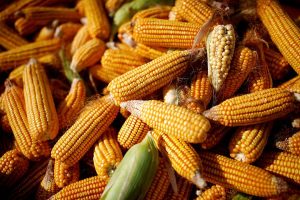By Adrian H. Halili, Reporter
WEATHER disturbances remain a major hurdle to achieving the government’s plans for improving corn production, feed millers said, adding that the resulting impact on feed prices will have knock-on effects on food price stability.
The Department of Agriculture (DA) is targeting an 81% corn self-sufficiency rate, which feed millers said would reduce import dependency and result in tariff savings that it hopes will be reflected in lower feed and food prices.
The DA said that as of Nov. 5, damage to the corn crop due to recent weather disturbances was 377,378 metric tons, valued at P7.10 billion.
“If domestic corn production increases and meets a significant portion of demand, it could potentially lower the cost of animal feed,” Edwin C. Mapanao, president of the Philippine Association of Feed Millers, Inc., told BusinessWorld.
“Corn is a primary ingredient in feed, and reducing reliance on imports can decrease costs associated with transportation and tariffs,” he added.
According to the Philippine Statistics Authority, the volume of corn production rose 1.3% during the third quarter to 2.5 million metric tons.
In June, President Ferdinand R. Marcos, Jr. signed Executive Order No. 62, which extended the lowered tariffs on corn imports until 2028. Tariffs on corn were retained at 5% for shipments within the minimum access volume quota and 15% for those exceeding the quota.
Mr. Mapanao said that the actual impact on feed prices will also depend on other factors, such as demand for animal products and global grain prices.
The DA said it allocated P5.32 billion to the National Corn Program, which would fund better planting materials, fertilizer, training, postharvest machinery, and small-scale irrigation projects.
“Achieving this target would depend on several conditions, such as favorable weather patterns, effective pest and disease management, efficient use of farming technology, and government support in terms of subsidies and infrastructure,” Mr. Mapanao said.
Mr. Mapanao added that the frequent typhoons and climate change continue to pose a threat to production.
“These factors can severely disrupt agricultural activities, damage crops, and make it difficult to meet production forecasts,” he said.
Mr. Mapanao said that the Philippines should develop resilient farming practices, strengthen disaster preparedness, and invest in climate-smart agriculture.
The Philippines is set to face an increased likelihood of tropical cyclone activity in the coming month due to La Niña.
The government weather service, known as PAGASA (Philippine Atmospheric, Geophysical and Astronomical Services Administration), said there is a 71% likelihood of La Niña setting in during the November to January period.
